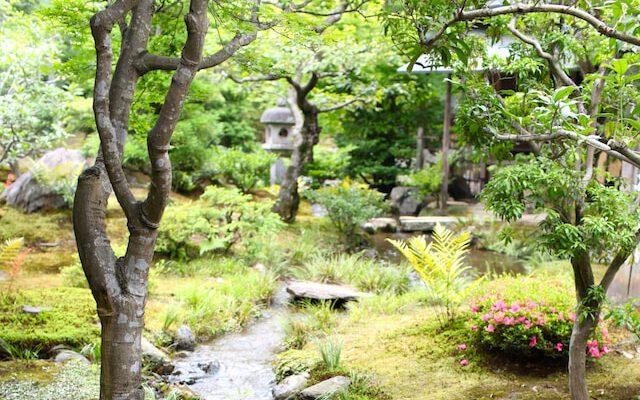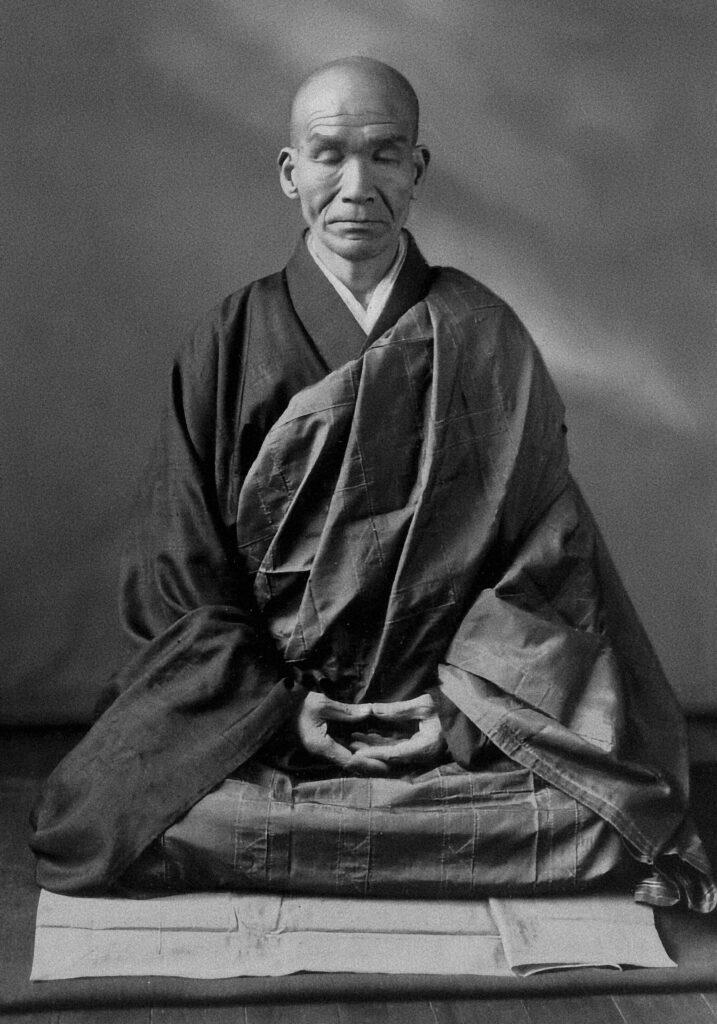
Zen meditation is also known as zazen in Zen Buddhism. It is a current in Buddhism with roots in Japanese culture and a strong focus on this meditation technique. It is intended to calm the mind and prepare the ground for mystical experiences such as kenshō or satori. The focus here is also very clear, as in Ashtanga yoga, the path to enlightenment. Zen meditation has its origins in Buddhism and is closely linked to Japanese culture. There are also various traditions and schools within zazen.
Zen meditation is characterized by its reduced environment and a strong focus on attention. As a result, the meditators appear extremely focused in the photos, even to the outside world.

The focus on concentration also corresponds to the technique used in yogic meditation, where we use stable concentration as the basis for reaching deeper states of consciousness.
Alignment in Zen meditation
Similar to the Buddhist meditation practice of Vipassana meditation, it involves radically focusing on the present moment in order to accept and detach from everything that has happened. The strict posture of the meditator points to the mental posture – to focus and clearly align the mind.
While we use tools such as mantras or yantras in yoga meditation and use body points and breath as tools in Vipassana meditation, Zen meditation involves a radical reduction to the present moment. As simple as it sounds, it can be overwhelming for beginners, as the physical and mental experiences often take us out of the moment.
“Zen Mind is beginners mind.”
Shunryū Suzuki
Kōan
The development of the Zen meditator is therefore also examined in a personal conversation with the Zen master. We are also familiar with this ritual from yoga and it makes even more sense in Zen meditation because the reduced and simple method provides hardly any mental tools for meditation. The function of a kōan is to challenge the student’s entrenched mind again and again. Here, logic and expectations are often broken in order to bring the student further along the path to enlightenment. The Kōans also have a variety of different traditional texts.
“A monk asked Tozan: ‘What is Buddha?’ Tozan replied: Masagin (麻三斤 – three pounds of flax).”
18. Kōan des Mumonkan
Garden, walking, tea and ritual
Typical elements are the Zen garden, which on the one hand is based on a tradition with rules and on the other hand respects the chaotic structure of nature. In addition, there is the famous tea ceremony, which is intended to increase the attentiveness of those present. Ritual walking is also used between the meditation sessions. We walk extremely slowly here to keep our attention while walking. Here, as in yoga and Buddhism, rituals are an essential part of meditation practice.
Instructions for a Zen meditation session
- Before you start, it is important to find a quiet and undisturbed place where you can meditate. Choose a place that does not overstimulate your senses and where you feel comfortable. You are welcome to reduce the surroundings to the bare minimum of furniture in keeping with tradition.
- The sitting posture is a central component. Sit on a comfortable cushion or meditation bench and find an upright and stable position. Cross your legs and place your hands on your lap in a relaxed position.
- Zen meditation is all about calming the mind and focusing it on the present moment. Start by closing your eyes and paying attention to your breath. Breathe in and out slowly and deeply. Let your thoughts come and go without following them. This meditation is primarily a passive form of meditation. We adopt the attitude of absolute observation of all processes. It is helpful if you already have a good level of concentration to prevent the mind from carrying you away with its thoughts. If you feel lost due to an excess of impressions, anchor yourself in the breath at the tip of your nose.
- In meditation we want to move from the gross to the subtle. When we find ourselves in focus, we should endeavor to expand our consciousness to become clearer and more attentive.
- Deepen your meditation by focusing on the stillness within you and around you. Enjoy the moment of pure being, in which you play no role, have no expectations and simply exist. You are taking a vacation from yourself, so to speak. Stay in this silence for a few minutes and feel the peace and clarity that arise from it.
- You can also stand up in between to walk slowly and focused through the room. Meditative walking is a component of meditation alongside rituals such as drinking tea or kōans. The inner posture is maintained when we rise from the seat. If you are a beginner and not attached to any tradition, you are welcome to stand up during meditation and perform simple actions in an attempt to maintain the inner meditative posture. Then return to your seat and continue seamlessly.
- Open your eyes when you feel like it and take your time to find your way back. Feel the peace and clarity that you experienced during the meditation and take it with you into your everyday life.
Integrating Zen meditation into everyday life
Zen meditation is not just limited to the time you spend in the meditation room. It can also be integrated into your everyday life to develop more mindfulness and serenity. Pay attention to your breathing and posture as you carry out everyday tasks. There is often a Zen center in your city.